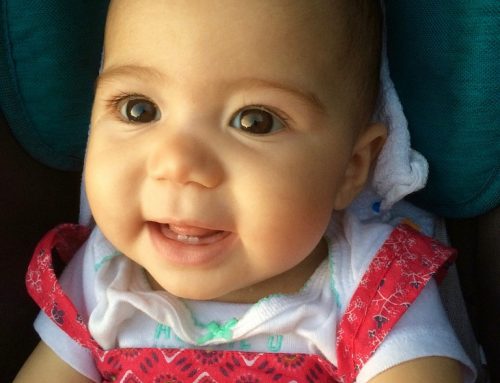As a baby grows and developmental milestones unfold, he is on a quest of discovery & adventure. Parents often enquire of ways to engage kids in activities that are fun and cater to their mental and physical development. The first five years play a key role in the emotional, physical & mental growth of a child. Babies are inquisitive growing up. Their brains are fertile. Plenty of learning and development is in scope [1]. Parents often scramble of ways to engage their child. What toys to buy? What activities to do? Good news is, ordinary & easily available household items can be used for an engaging activity for kids. These activities are stimulating as well as fun!
This post is about using home items for engaging kids that promote mental & physical development.
Why home items are great for engaging kids
Engaging in home items tap children’s cognitive, motor & linguistic potential. These items present simple, inexpensive & interactive options which don’t necessitate the purchase of toys.
Learning to play with items found within the familiarity of home promotes creativity. As well as an early life lesson on reusability!
Top 10 engaging activities for kids using home items
1. Blowing Bubbles:
Toddlers and older kids can spend hours blowing & bursting bubbles during bath time or otherwise. Show them this fun, especially in summers. Include this as an activity during playdates or kiddie parties. Encourage kids to burst bubbles without bumping into each other.
Even infants love bubbles. For a newborn during tummy time, blow bubbles to encourage the baby to move neck and look around. As the tummy, neck, hand muscles become stronger, the baby will slowly try to grab them. Once the baby starts crawling or learning to walk, blow bubbles to encourage an infant to move. See the fun of baby trying to grasp or catch a bubble.
Skills developed [2]:
- Visual skills like tracking, following, focusing on a thing
- Fine motor skills of grasping and hand-eye coordination
- Muscle development in mouth/jaw
- Gross motor skill of balance and strengthening muscles
2. Paper folding:
For toddlers as well as older kids, introduce folding old newspapers/unused paper. Get your kid to make basic origami boats, planes, rockets, etc. from these. This is a great indoor activity which is fun and relaxing. Watch them unfold and re-fold the paper as they try to remember the steps and correct folds, and master the technique.
Skills developed:
- Creativity & imagination
- Focus
- Patience & perseverance
- Hand-eye coordination
3. Sorting activity:
At around 15 months, your baby can start to match items [3]! You can use various things at home to engage a child in sorting activity. Few easy engaging sorting activities are, sorting by:
- Shape: Give cutlery, fruits, vegetables, or shapes cut out from paper in different sizes
- Colour: Give beads*, cloth pins, thread bundles, of different colours
- Size: Give rocks, buttons, clothes (baby/mom/dad), of different sizes
Skills developed:
- Teaches the difference between similar & dissimilar things
- Introduces beginner math skill [4]
- Colour identification
- Fine motor skills
4. What is behind that door:
Your fridge and cupboard can become another fun activity centre. Let your child peep into the fridge/cupboard & make a mental note of all he sees. Close the door and ask him to recall from memory. It is a fun activity with a group of kids as well.
Skills developed:
- In a group to build social & competitive skills
- Memory
- Focus
5. Target practice:
No no not with an air gun or a dartboard. Let kids throw balls, clothes clips, crumpled waste paper, or socks roll (folded military-style) into an empty bin like target practice.
Start with one object & one bin. As the child gets older, add more objects. Use a separate bin for each type, vary distance & add obstacle. Again a great activity with a group of kids.
Skills developed:
- Focus
- Fundamental movement skills [5]
- Hand-eye coordination
6. Threading:
Take a colander as a threading board. A child can thread shoelaces along colander’s holes. You can thread with the child and create threaded shapes.
Skills developed:
- Fine motor skills: the agility of fingers & hand-eye coordination
- Focus
- Creativity
7. Stamp that:
Give kids fallen leaves, sponges, bangles & coins to make impressions. Or click here to know how to make stamps using items at home.
Provide natural and easy to make colouring ingredients like beetroot/deseeded jamun/turmeric/spinach etc. juice (to make colour just grind with water, strain each item and to make the ink).
Skills developed:
- Creativity
- Fine motor skills
8. What’s the Shape:
Around 2-3 years of age, one can teach a child about different shapes. Roll some roti dough and cut different shapes.
Once a child learns shapes, make a game of identifying shapes of different items at home like clocks, plates, cubes, eggs & napkins in varying shapes etc..
Skills developed:
- Basic math skills
- Scientific skills like categorisation and comparison [6]
9. Musical bonding:
Get your child steel/metal pots, pan in varying size and depth & a wooden spoon/spatula. Watch while he creates music & rhythm. Almost all kids love this activity.
Take a wooden spoon yourself and join your child to jam in the kitchen ;-).
Skills developed:
- Creativity
- Motor skills
- Scientific reasoning [7]
10. Cleaning activity:
Ask any Montessori teacher which is one of the favourite activity of the toddlers in their class. Most of them will say it’s cleaning.
Give your child a dry cloth and let them wipe spilt water or clean windows/doors. Or encourage them to clean the table after meals, or mop play area at home, or wipe plates/cutlery before meals. See the joy and pride on the child’s face of doing an adult activity.
Skills developed:
- Self-care
- Gross and fine motor skills (muscles in shoulders, abdomen, arms, hands & legs)
11. What’s that sound:
Put grains/beads/stones/lentils in different metallic containers. Ask your child to guess items based on sounds. Again a great group game.
As the child grows, use containers of different material like plastic, glass, cardboard for this game.
Skills developed:
- Trains ears to distinguish various sounds
- Sense of sound to identify objects
The 9 more home items that are fun for kids
1. Tumblers
Make a game of using tumblers to pour water into different sized containers/buckets without spilling. Start with one tumbler and one container and gradually increase the difficulty as the child gains the confidence to pour without spilling.
If you have potted plants, encourage your child to water them regularly using a tumbler after checking the soil for dryness.
Skills developed:
- Concentration
- Decision making
- Independence
- Locomotor skills & object control while moving soil, rake & water
2. Containers/Utensils
Get toddler to pick up containers/utensils (empty or filled depending on child’s age and ability to lift) with both hands. Gradually encourage them to pick the same item with one hand.
When older, up the challenge by making your child balance two or more containers stacked over each other while walking.
Skills developed:
- Two-handed and single-handed grip
- Concentration
- Balance
3. Tongs/cloth clips
Make a game of picking up small objects like raisins, small beads, legumes. etc..
Skills developed:
- Pincer/precision grip
4. Dough
Engage kids in mashing dough, rolling it, or to make various shapes from it. Make different coloured dough by mixing grinded/grated beetroot or spinach.
Skills developed:
- Strengthens finger muscles & lays the foundation for handwriting skills
5. Eggs
Ask you to break eggs ensuring shells don’t mix with yolk & white. As the child grows older, let him beat the egg. Make a pancake/omelette from the beaten egg. Your child would finish off the item, without fuss, made from his hard work :-).
Skills developed:
- Hand-eye coordination
- Caution in dealing with messy things
- Foundation for self-reliance through basic cooking skills
6. Shoe boxes
From 18 months get him to stack shoeboxes like big blocks through pretend play. If no shoeboxes one can use any unused carton as well.
Skills developed:
- Gross motor skills
7. Chalk
Give your child different coloured chalks and let them draw on the walls or designated drawing area. They are easy to clean.
Around 2.5-3 years, you can teach your child a game of hopscotch with chalk.
Skills developed:
- Fine motor skill
- Body control/body rhythm, strength & balance
8. Broom
Holding this at varying heights, let kids go under, skip over & jump to touch it. For kids above 3 years of age, a great game for kiddie parties.
Skills developed:
- Builds stamina
- Gross motor skills
- & develops social skills.
9. Fruits
Give your child a fruit like banana, orange that is easy to peel. To your toddler give a peeled fruit like banana or fruits to cut like strawberry, mango, etc to chop using a starter knife. Or let your child squeeze juice from orange using a traditional squeezer.
As he grows adept with managing a soft fruit, he’ll chop with a sharp knife under supervision.
Skills developed:
- Fine motor skills
- Focus
- Sense of independence
10. Mortal & Pestle
Shocked? Don’t be. A toddler, under guidance, can spend hours crushing and grinding different food items.
Whenever I need to work on something and keep Anu busy in my vicinity, I give her the small steel mortal & pestle. She is happily occupied crushing peanuts, almonds, roasted chana, etc.. And then she enjoys snacking on the crushed items. Healthy eating, engaged kid, the mom gets to work ….. great item at disposable :-).
Skills developed:
- Fine motor skills
- Muscle development in arms and shoulders
Conclusion
Find items at home to avoid store-bought toys. These may be habit-forming, plastic-based, expensive & leave the child asking for more. They soon become useless. You’ll have things all over your house which are very attractive to kids. Watch them add meaning to these mundane things using their innate sense of creativity & innovation. Tap their imagination. Utilise home items to create engaging activities for kids as a sustainable way of having fun & learning while growing up.






This is fantastic. So relevant and innovative.
Amazing post Rohini. Will be coming back to it when my baby is a little older. Some things I can do right away.
So many interesting ideas!!
Awesome write up Rohini.
Thanks a lot for so many ideas.
Very interesting! Almost all things are found in our homes. Creative way to use it for fun and development in kids.. ?